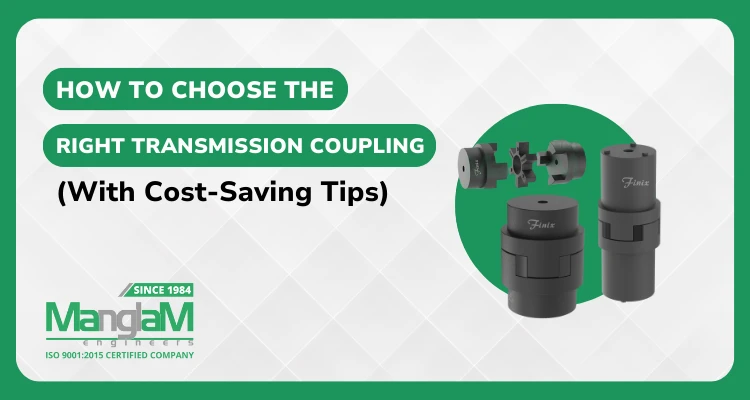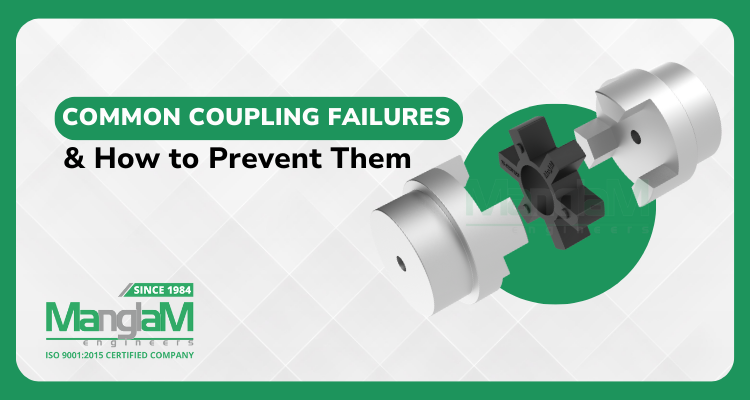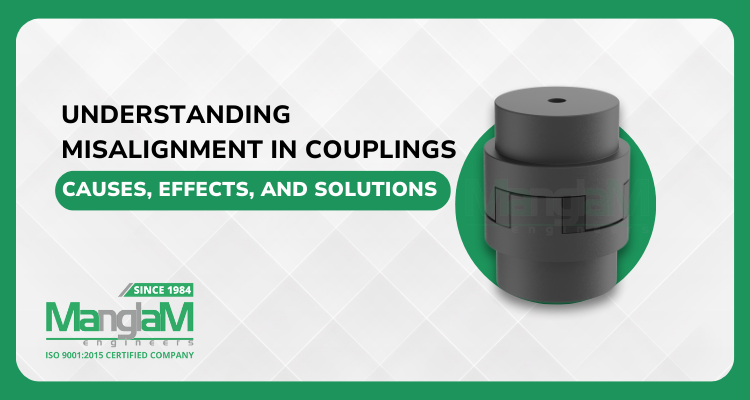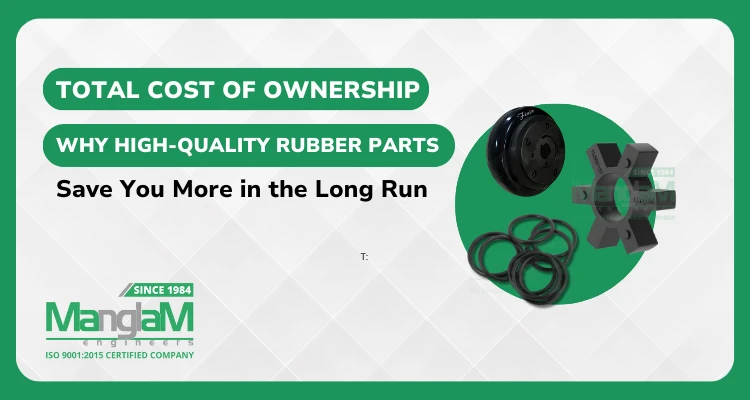
Rubber Tyre Coupling Demand in Middle East, Africa & Europe
September 29, 2025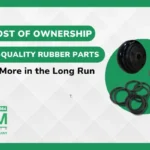
Total Cost of Ownership: Why High-Quality Rubber Parts Save You More in the Long Run
October 28, 2025Introduction
Choosing the right transmission coupling might seem like a small detail in a huge industrial setup, but it's the critical link that determines your machinery's performance, longevity, and overall operational cost. The wrong choice leads to frequent downtime, energy loss, and even a major equipment failure. The right one ensures smooth, efficient power transmission for years.
This guide simplifies the process of choosing the right industrial coupling. We’ll help you identify the ideal solution for your application—saving you both time and money. At Manglam Engineers, we've helped hundreds of OEMs, EPC contractors, and industrial buyers optimize their systems, and now we're sharing that expertise with you.
What is Power Transmission Coupling?
A power transmission coupling is a mechanical device used to connect two shafts end-to-end in order to transmit power. Think of it like the joints in your body—they connect different parts, allow for slight movement and flexibility, and ensure that power (in this case, rotational force) is transferred smoothly from one part to another.
These devices are fundamental in almost all rotating machinery, from massive industrial pumps and conveyors to smaller manufacturing equipment. They connect the driving shaft (e.g., from a motor) to the driving shaft (e.g., on a gearbox or pump).
Why is Choosing the Right Industrial Coupling So Important?
Selecting the correct shaft coupling is not just a technical requirement; it's a strategic business decision. A well-chosen coupling directly impacts your operational efficiency and bottom line by providing several key benefits:
- Protects Your Equipment: It absorbs shock loads, vibration, and minor misalignment, preventing premature wear and damage to expensive components like bearings and seals.
- Reduces Unplanned Downtime: durable, correctly specified coupling is reliable. This means fewer breakdowns, less time spent on maintenance, and higher productivity.
- Improves Energy Efficiency: By ensuring a smooth transfer of power, the right coupling minimizes energy loss between the motor and the driven equipment, leading to lower electricity bills.
- Lowers Total Cost of Ownership (TCO): While a cheaper, incorrect coupling might save money initially, it often leads to higher maintenance, energy, and replacement costs down the line.
Should I Use Flexible or Rigid Coupling?
The first and most important decision in your selection process is choosing between a flexible or a rigid coupling. The answer depends almost entirely on one factor: shaft alignment.
A rigid coupling is used when two shafts are in perfect alignment. It offers a solid connection, is simple in design, and is highly efficient at transmitting torque. However, it provides zero excuses for misalignment and does not restrict vibration.
A flexible coupling is designed to accommodate misalignment between shafts. In the real world, achieving and maintaining perfect alignment is difficult due to thermal expansion, foundation settling, and manufacturing tolerances. Flexible couplings compensate for this by allowing for parallel, angular, and axial misalignment.
At Manglam Engineers, we specialize in a wide range of flexible couplings because they solve the most common challenges in industrial applications.
Comparison: Flexible vs. Rigid Couplings
| Feature | Rigid Coupling | Flexible Coupling |
|---|---|---|
| Primary Use Case | Perfectly aligned shafts | Shafts with potential misalignment |
| Misalignment Tolerance | None | Accommodates parallel, angular, and axial |
| Vibration Damping | Poor | Good to Excellent |
| Typical Applications | Line shafting, specific machine tools | Pumps, fans, conveyors, general machinery |
| Common Types | Sleeve, Flange | Jaw, Tyre, Gear, Pin Bush, HRC |
| Primary Advantage | High torque, simple, cost-effective | Protects machinery, versatile |
How Do I Choose the Right Coupling for My Machinery?
Once you've decided on a flexible coupling, you need to narrow down the options. Answering these seven questions will guide you to the perfect power transmission coupling for your specific application.
1. What is the Torque Requirement?
Torque is the rotational force the coupling must transmit. You need to consider the nominal torque (the steady running torque) as well as any peak torque that might occur during startup, shutdown, or shock loads. Always select a coupling with a service factor that can handle the maximum torque your system will experience.
2. What is the Shaft Speed (RPM)?
The rotational speed, measured in revolutions per minute (RPM), is crucial. Some couplings, like certain elastomeric types, have speed limitations due to centrifugal forces. For high-speed applications, dynamically balanced coupling is essential to prevent vibration and premature failure.
3. How Much Misalignment Do I Need to Accommodate?
Every flexible coupling has limits on the amount of parallel, angular, and axial misalignment it can handle. For applications with significant vibration or shock, a highly flexible option like a Tyre Coupling is often the best choice due to its exceptional damping capabilities. For general purpose applications, Jaw Coupling or HRC Coupling provides a great balance of performance and value.
4. What are the Environmental Conditions?
Consider the operating environment. Will the coupling be exposed to high temperatures, corrosive chemicals, oil, or excessive dust? These factors dictate the required material. For instance, Nylon Sleeve Gear Couplings are excellent for dusty, low-maintenance environments, while couplings with specific elastomeric elements (like NBR or Hytrel) are chosen for their resistance to chemicals and temperature.
5. How Much Vibration Damping is Needed?
Vibrations can impose damage on machinery, leading to noise and component failure. Elastomeric couplings (those with a rubber or polyurethane element) are excellent at damping vibrations. Tyre Coupling is a prime example, acting like a shock absorber in your drivetrain. Pin Bush Couplings are also a flexible and reliable choice for absorbing shock loads in heavy-duty applications.
6. What is the Space and Bore Size Constraints?
Physical space is a practical but often overlooked factor. Ensure the coupling's outer diameter and length will fit within your machine's design. You must also confirm that the coupling's bore range can accommodate your driver and driven shaft diameters. Our team at Manglam Engineers can help you find a coupling with the right dimensions for your setup.
7. What are the Maintenance and Serviceability Requirements?
How easy is it to install, inspect, and replace the coupling? A Jaw Coupling, for example, is considered "fail-safe" and allows for easy replacement of the central spider element without moving the hubs. This "drop-in" design minimizes downtime during maintenance. Couplings like our Chain Coupling are also simple to install and handle high torque in compact spaces.
How Can I Reduce Costs with the Right Coupling Strategy?
True cost savings come from looking beyond the initial purchase price. Here are four expert tips to lower the total cost of ownership (TCO) for your transmission couplings.
Tip 1: Don't Over-Engineer or Under-Engineer
It's tempting to choose the biggest, toughest coupling available, but this is often unnecessary and expensive. Conversely, choosing an undersized coupling to save on initial cost will likely lead to premature failure and costly downtime. Match the coupling to the application's specific torque, speed, and misalignment needs.
Tip 2: Prioritize Proper Installation and Alignment
The number one cause of coupling failure is poor alignment. Even the best flexible coupling will fail quickly if it's forced to operate beyond its design limits. Investing in laser alignment tools and proper installation training provides a massive return by extending the life of your couplings, bearings, and seals.
Tip 3: Think in Terms of Total Cost of Ownership (TCO)
Analyze the complete lifecycle cost. A coupling that costs 20% more but lasts twice as long and requires zero lubrication is far cheaper in the long run. Factor in the cost of potential downtime, maintenance labor, and energy consumption when making your decision.
Tip 4: Partner with an Expert Supplier
Don't make the decision alone. A reliable supplier does more than just sell parts—they provide solutions. By partnering with Manglam Engineers, you gain access to technical experts who can help you select the most cost-effective and reliable industrial coupling from our extensive range, including Jaw, Tyre, Pin Bush, HRC, and Nylon Gear couplings.
Your Partner in Power Transmission: Manglam Engineers
Choosing the right transmission coupling is an investment in your machinery's reliability and your company's profitability. By considering the key factors of torque, speed, misalignment, and environment, you can select a component that not only connects shafts but also protects your entire system.
At Manglam Engineers, we are committed to providing high-quality, durable, and cost-effective coupling solutions to industries worldwide. Let our expertise guide you to the perfect fit.
Ready to optimize your machinery? Contact us today for a personalized quote and expert consultation on your next project!

